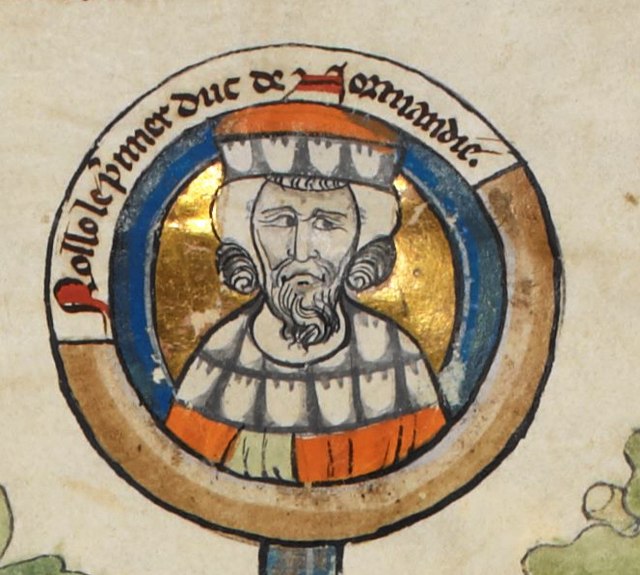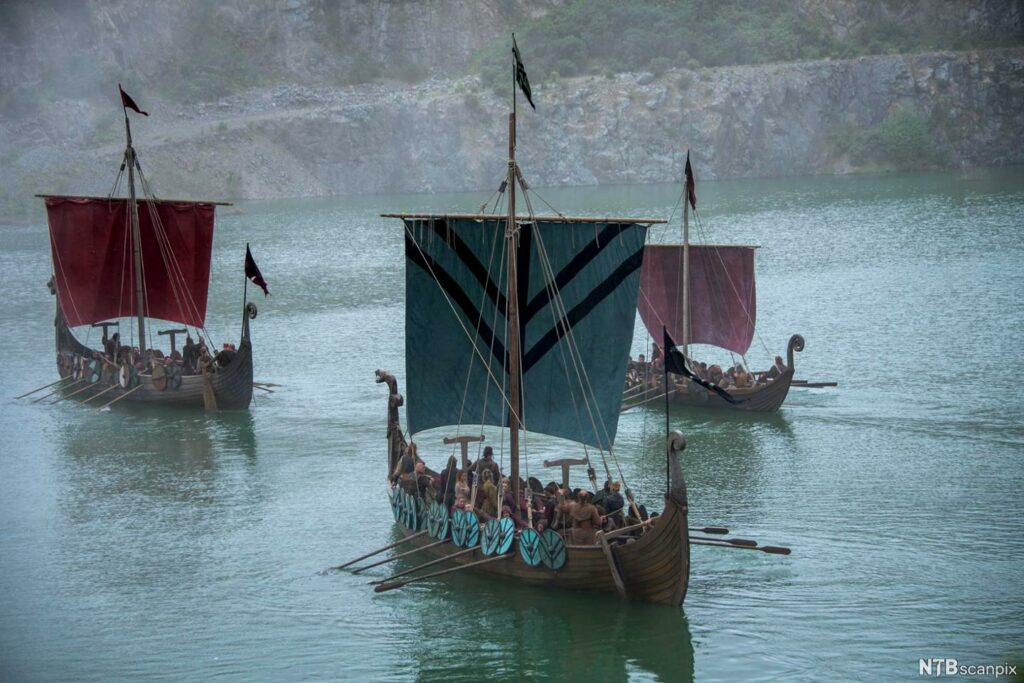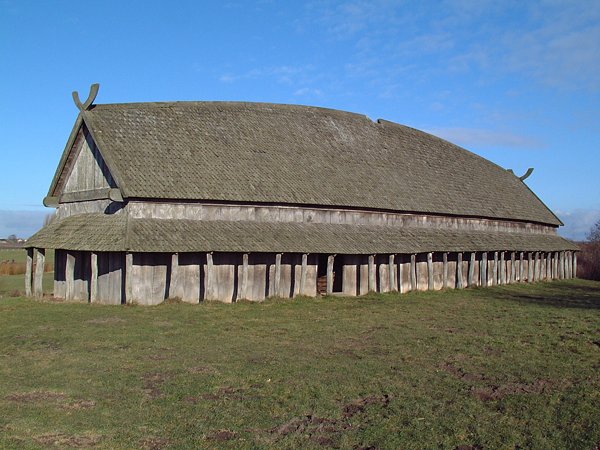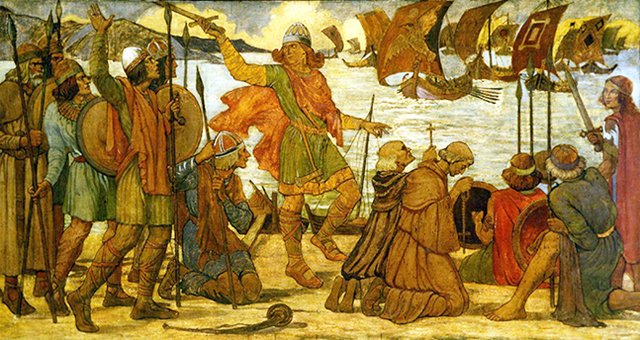Rollo was a Viking leader who settled Normandy. He set the stage for the merging of Viking and Frankish cultures.
As the great-great-great-grandfather of William the Conqueror, Rollo’s legacy includes far more than raiding and pillaging. He established a royal bloodline that, centuries later, would create a bitter rivalry between Britain and France that would last for centuries.
It’s time to take a look at one of Europe’s most important Vikings and the legacy he left behind.

How Rollo the Viking Became Duke of Normandy
Beginning in the 8th century, a diverse group of Scandinavians, collectively known as Vikings, began to plunder monasteries and coastal towns throughout the British Isles.
They learned about Europe’s growing wealth and they wanted to take some of it for themselves. They expanded their operations to the continent, sailing up the Seine River and attacking settlements along its banks.
In the 9th century, French kings began paying off the Vikings in an attempt to protect themselves. Despite the payments, the attacks never seemed to stop.
By 911 AD, Charles the Simple, then king of France, decided to try a different tactic. Instead of paying off the Vikings, which only seemed to encourage more attacks, he made a different kind of offer.
After defeating Rollo and his men at a battle outside of Chartres, Charles promised the Viking leader the lands of the lower Seine, an area in the northwestern corner of France.
Nestled between Paris and the northern coast, Rollo’s newfound kingdom forever changed the course of European history.
From then on, Rollo’s Vikings started blending more and more into the Frankish culture. They adopted the language and customs and intermarried with Frankish neighbors.
Rollo himself even converted to Christianity and took a Frankish bride as a way to cement his relationship with Charles the Simple.
It’s not clear whether Charles offered to give up his lands after Rollo had already conquered them or not; but whatever the case, the agreement held up. Once Rollo moved onto his lands there were no more Viking raids on the French kingdom.
A new chapter in Viking history had begun. However, it would eventually lead to even bloodier conflicts.
Rollo the Viking Changed History
Rollo’s settlement of Normandy set the stage for a series of events that would eventually lead to William the Conqueror’s invasion of Britain in 1066, and the subsequent conflicts between Britain and France.
Centuries before that happened, Rollo’s main concern was defending a territory whose borders were marked by little more than streams and gullies in some places.
The French crown at this point was relatively weak, but there were other rivals. These included the counts of Flanders and the house of Anjou. They posed threats to Rollo’s lands.
Despite the challenges, Rollo managed to impose law and order on a population that was used to relative laxity in the laws. He imposed the death penalty for robbery, assault, and murder.
He also rebuilt towns that had been destroyed in earlier Viking raids and managed to create thriving agricultural settlements.

Rollo’s Lineage Continues His Reign
But perhaps his most important contribution came through his offspring.
When Rollo died in 928 AD, his son William the Longsword became the new Duke of Normandy. William was like his father in many ways. He continued to carry out attacks against rival clans in the area and maintained the same kind of firm grip over his people.
But with each successive generation, the lines between Viking and Frank began to blur.
By the time Rollo’s great-great-grandson, Robert I, became uke, he lent a hand to a member of the neighboring Capet family. This family was then competing for the French throne.
In return for Robert’s military aid, when the Capetian hopeful eventually became king of France, he recognized Robert’s son William. This set the stage for a complicated royal conflict.
That conflict arose because William, who would eventually be known as William the Conqueror, the first king of England, claimed he was next in line for the English throne. He did this by claiming that Edward the Confessor, then king of England, had chosen him as his successor.
To William’s surprise, Edward ultimately decided to appoint Harold Godwinson. This was the son of the Earl of Wessex and a man who enjoyed the support of many of the English nobles.
To erase any doubt as to his claim, William decided to settle matters by sailing to England with a force of somewhere between 5,000 and 7,000 men. When Harold learned about the landing, he rushed his troops to Hastings to confront William’s army.
Unfortunately, Harold’s men were largely untrained, undisciplined peasants, and they were exhausted from being force-marched to reach the battlefield as quickly as possible.
William’s men, equipped with crossbows and cavalry, defeated the English during a grueling, bloody battle. In the course of the fighting Harold fell.
This meant that by the time William reached London on December 25, there was no one to oppose him as he crowned himself king of England.
From Vikings to Frenchmen
Many later historians ascribed William’s success in the battle to the superior Viking blood that coursed through the veins of his men.
But that claim ignores the fact that by 1066, Rollo’s original band of Vikings (who were made up of a mix of Scandinavians) spent five generations living among the Franks.
The famous Bayeux Tapestry, which portrays the historic battle, bears the caption, “Here the English and the Franks have fallen in battle.”
Once William crowned himself king on Christmas day, 1066, the fighting was far from over. It would take him more years before he could properly secure his English kingdom. But once he did, European history entered a new chapter.
For the next several centuries, various English kings would lay claim to French lands, which would in turn lead to bloody conflicts between the dueling monarchies.
And it all started with Rollo, the Viking leader who went from raiding and pillaging to establishing a powerful line of dukes that would eventually see one of its own crowned the king of England.

